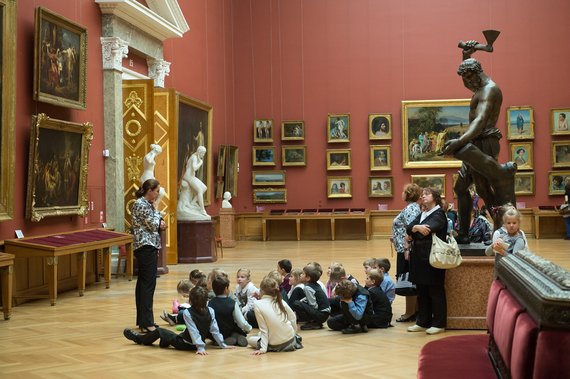Home » HART » Stephanie Storey: To Succeed in Business, Major in Art History
Stephanie Storey: To Succeed in Business, Major in Art History
Posted by vrcvanderbilt on Thursday, June 9, 2016 in HART, Student/Alumni, VRC.
 I hear it all the time from high school and college students (and their parents): to succeed, you must major in science, technology, engineering, or business. Any other degree is a waste of time. A frivolous hobby.
I hear it all the time from high school and college students (and their parents): to succeed, you must major in science, technology, engineering, or business. Any other degree is a waste of time. A frivolous hobby.
And an art history degree?! Completely useless. The brunt of the joke. Let me set the record straight: that thinking is false and becoming more false every day.
Today, our society is reliant on visual storytelling. Instagram, snapchat, everything on your computer or phone is visual. Pictures drive clicks. The more compelling a picture, the more eyeballs you draw, the more product you can push.
While others in college focus on numbers, art history students are developing a visual vocabulary and learning to tell compelling stories with a single image. An art history major can look critically at smash TV shows, viral videos, or marketing campaigns and deconstruct that content in visual terms. No matter what your numbers guys tell you, they cannot predict what will work and what won’t based on analytics. But someone with a command of the visual language can tell you whether an image will have an impact.
I am specifically talking about Art History. I’m talking about being educated in the history of perspective, color, composition, style, rhythm, disegno. I’m talking about being able to mentally reference images that have moved people for hundreds of years. If we can understand why and how the Sistine Ceiling, Rembrandt’s portraits, Van Gogh’s landscapes, and Munch’s Scream still touch us today, then perhaps we can help all our businesses connect more effectively in this crowded, competitive visual landscape.
 If Leonardo da Vinci had focused only on budgets, he never would have spent over a decade tinkering with the Mona Lisa. If Monet had based his decisions on marketing analytics, we would not have Impressionism. If Georgia O’Keeffe had listened to a focus group, she never would have painted a single flower.
If Leonardo da Vinci had focused only on budgets, he never would have spent over a decade tinkering with the Mona Lisa. If Monet had based his decisions on marketing analytics, we would not have Impressionism. If Georgia O’Keeffe had listened to a focus group, she never would have painted a single flower.
On one television show I produced, one network executive (with that valued business degree) was so data-driven that he dictated content choices based on 50-person focus groups, instead of looking at the product to see what was working. Needless to say, that show failed when it should have succeeded.
If the powers that be had more understanding of content—both written and visual—they would have more monetary, award-winning successes.
So students, if you want to major in art history, but are having a difficult time convincing your parents to pay for that “useless” degree, tell them that art history is your path to decoding our visual world; tell them you can make money as an expert in imagery. Parents, encourage your kids to study art history; they might just make something great.
And businesses, hire that art history major over that business major. Because in our modern society, those with a knowledge of our visual history will succeed. And those without it might not be able to compete.
Stephanie Storey graduated from Vanderbilt University in 1997 with a BA in Fine Arts (joint Art History and Studio Art) degree. She also has a Master of Fine Arts from Emerson College. She is an award-winning television producer in Hollywood, and her debut novel, Oil and Marble (art historical fiction about the real-life rivalry between Leonardo da Vinci and Michelangelo) received a rave New York Times review and is a Los Angeles Times bestseller.
*While in Nashville on a book tour for Oil and Marble, Storey presented the ideas expressed in this essay to Prof. Vivien Fryd’s class in late April. The essay was posted in The Huffington Post on May 24, 2016.

©2026 Vanderbilt University ·
Site Development: University Web Communications